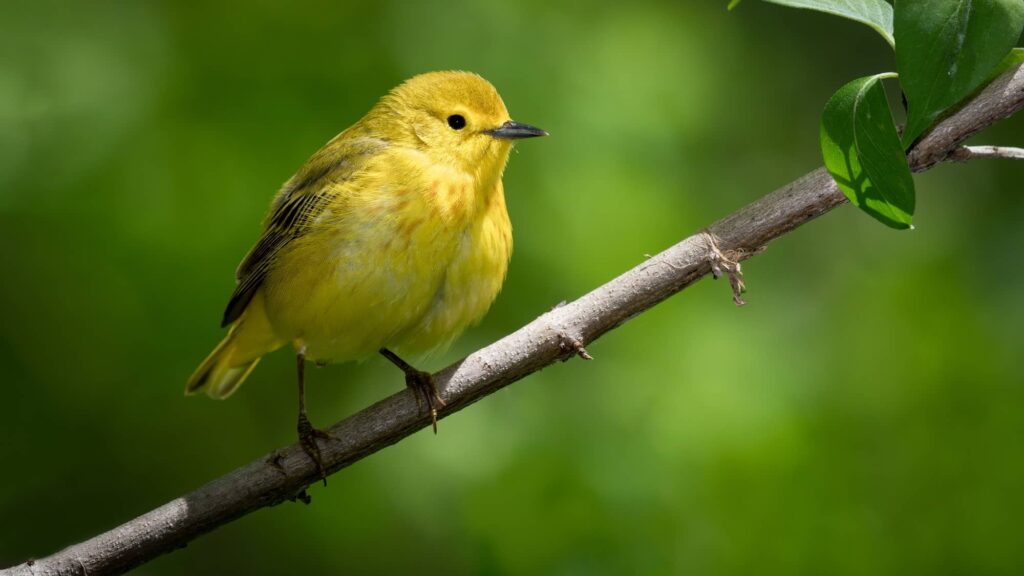Did you know that 80% of the land in Tennessee is used for agricultural purposes?
Of course, this means more green areas and more habitats for birds to live and breed. That’s partially the reason there have been a total of 423 bird breeds recorded in Tennessee alone.
There’s also the fact that the Volunteer State has more types of trees than all other states. So, you would expect to see a wide variety of birds there.
We have created a list of 26 birds you’ll want to look for. We even have them classified by color to help you identify them more easily.
Red Birds in Tennessee
Red-Headed Woodpecker
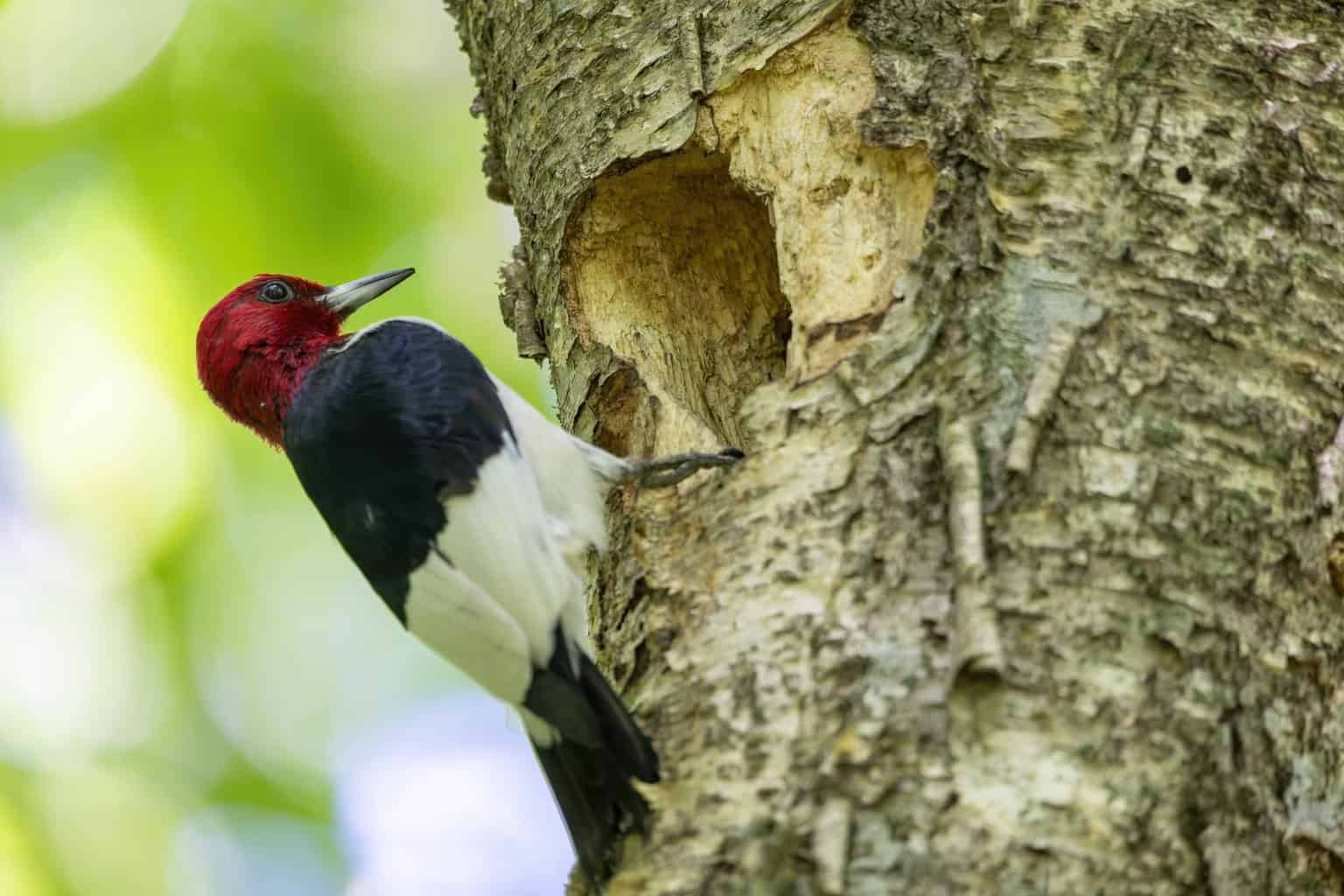
- Scientific Name: Melanerpes erythrocephalus
- Length: 7.6–8.9 inches
- Weight: 2–3.2 ounces
- Wingspan: 16–16.3 inches
Red-headed Woodpeckers are easily identifiable because of their bright red heads. They have jagged, checkered wings in black and white, and some of them have black wings with white ends.
These birds like to visit backyard feeders occasionally, so you may get lucky if you have a platform feeder. You can lay some fruits, mixed seeds, and nuts and wait for a Red-headed Woodpecker to make an appearance.
Other than backyards, you’ll see these birds in open habitats, parks, and meadows.
Pileated Woodpecker

- Scientific Name: Dryocopus pileatus
- Length: 16–19 inches
- Weight: 8.8–14.1 ounces
- Wingspan: 26–30 inches
Pileated Woodpeckers are the easiest to identify among all woodpecker species. They have long bodies with red, distinctive crests on top of their heads. Not to mention, they have long, pointed bills.
This species of bird is abundant in Tennessee. You can find them mostly around mature forests and woodland hedges. If you want higher chances of seeing them, you can look at dead trees. They like to peck triangular holes through them.
Summer Tanager
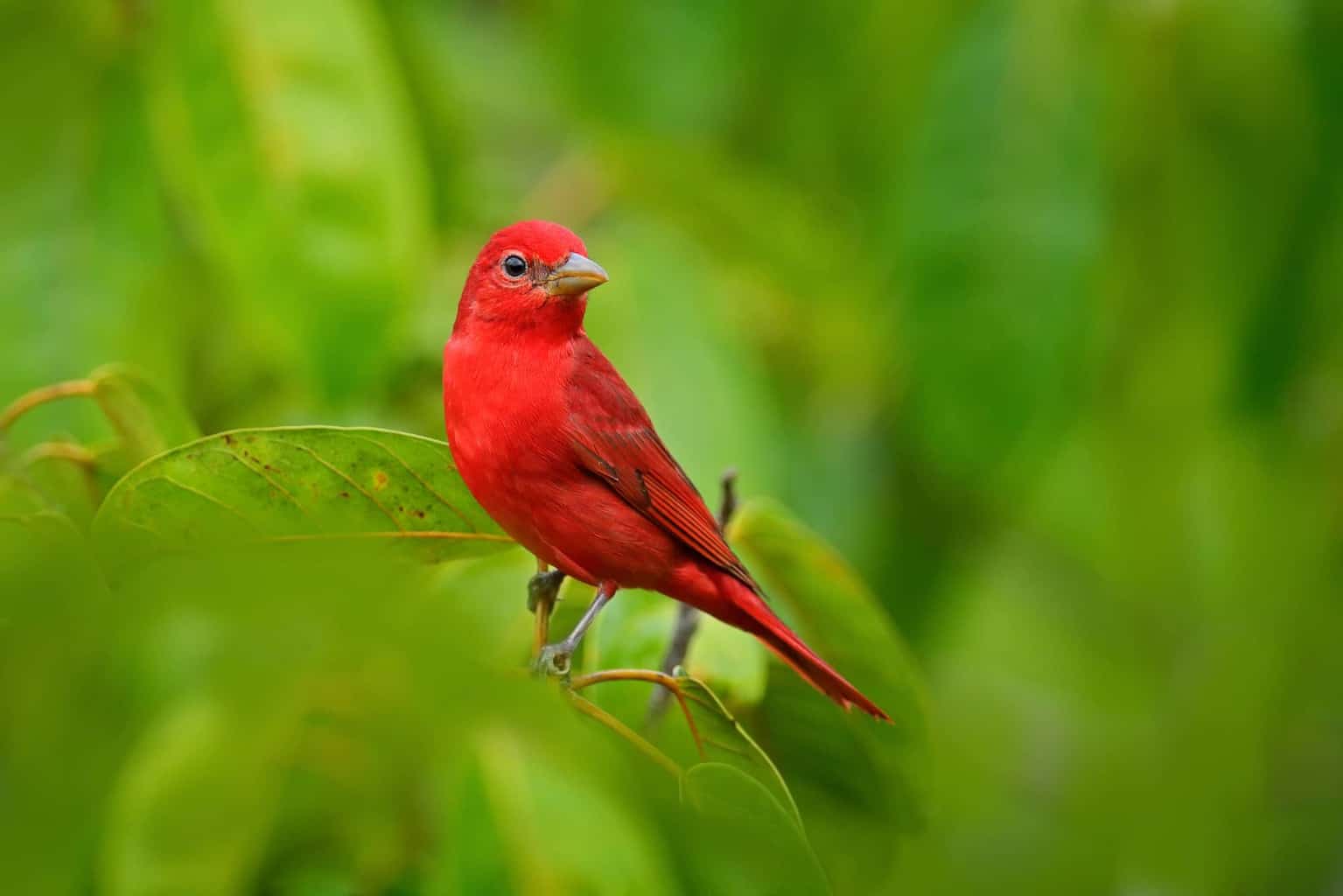
- Scientific Name: Piranga rubra
- Length: 6.7–7 inches
- Weight: 1.1–1.5 ounces
- Wingspan: 11–12 inches
Summer Tanagers are so red that you’ll rarely miss them. These colorful birds will undoubtedly catch your eye if they’re around, thanks to the bright pigmentation of their beautiful plumage. They look like Northern Cardinals, except their red color is way brighter.
These birds arrive in Tennessee around late April, and they stay for the whole summer. Then, they leave early in October. Generally, there’s a large population of them in the Volunteer State, and they become relatively common in the summer.
You can find them mainly around low elevation forests, and they prefer oak-hickory woodland.
Northern Cardinal
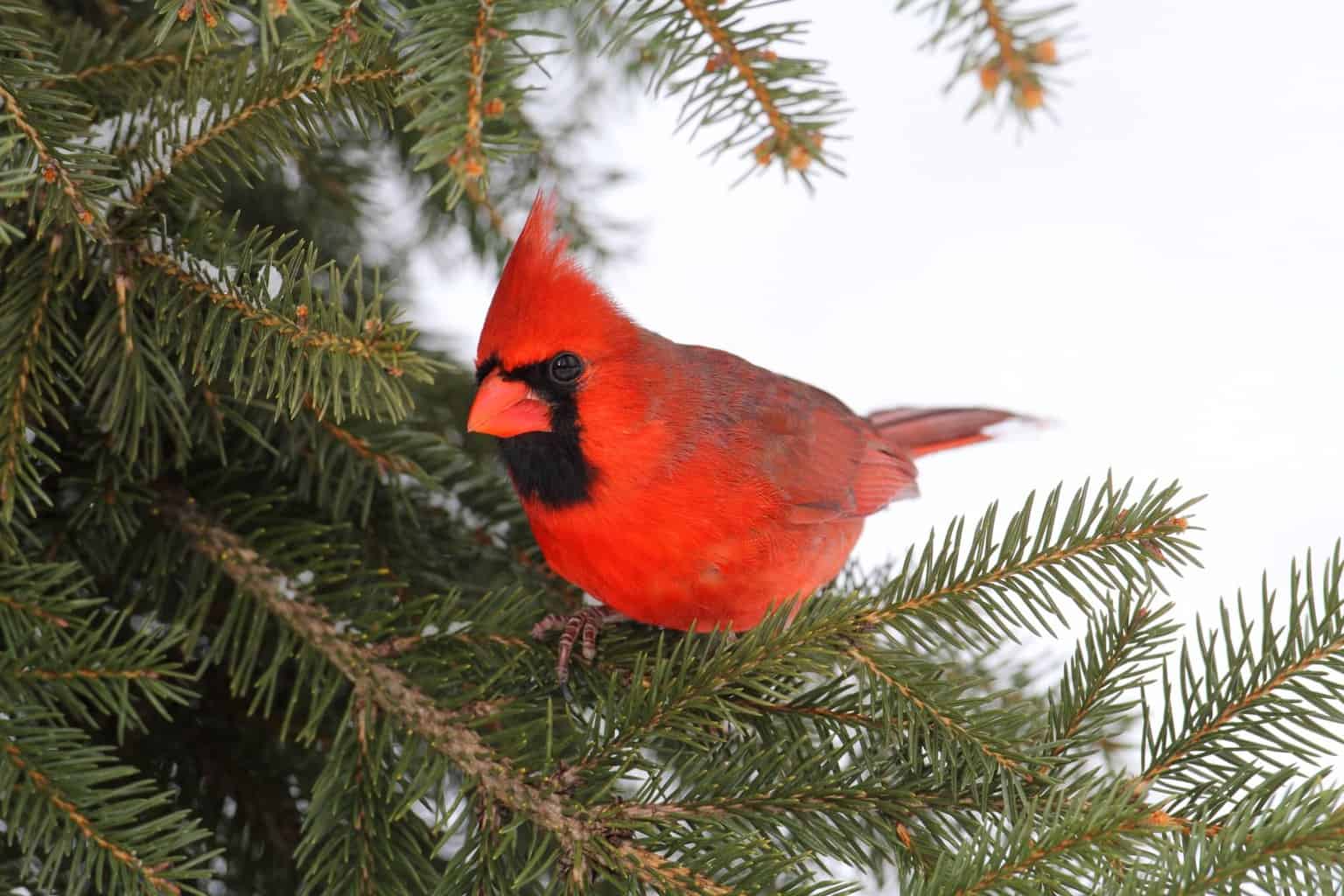
- Scientific Name: Cardinalis cardinalis
- Length: 8.3–9.1 inches
- Weight: 1.5–1.7 ounces
- Wingspan: 9.8–12.2 inches
You probably don’t need identification tips for Northern Cardinals. They’re so abundant in the US that you’ve undoubtedly seen them at least once before. They’re red, round, and small, with a few black and white spots, and their population is stable in Tennessee.
You’ll mostly see these common birds on high branches, but they sometimes get close to the ground to forage for food. You can probably see them pulling a worm out of the earth.
If you want to attract this familiar bird to your backyard bird feeding station, you can offer seeds, suet, and fruits.
Red-Winged Blackbird
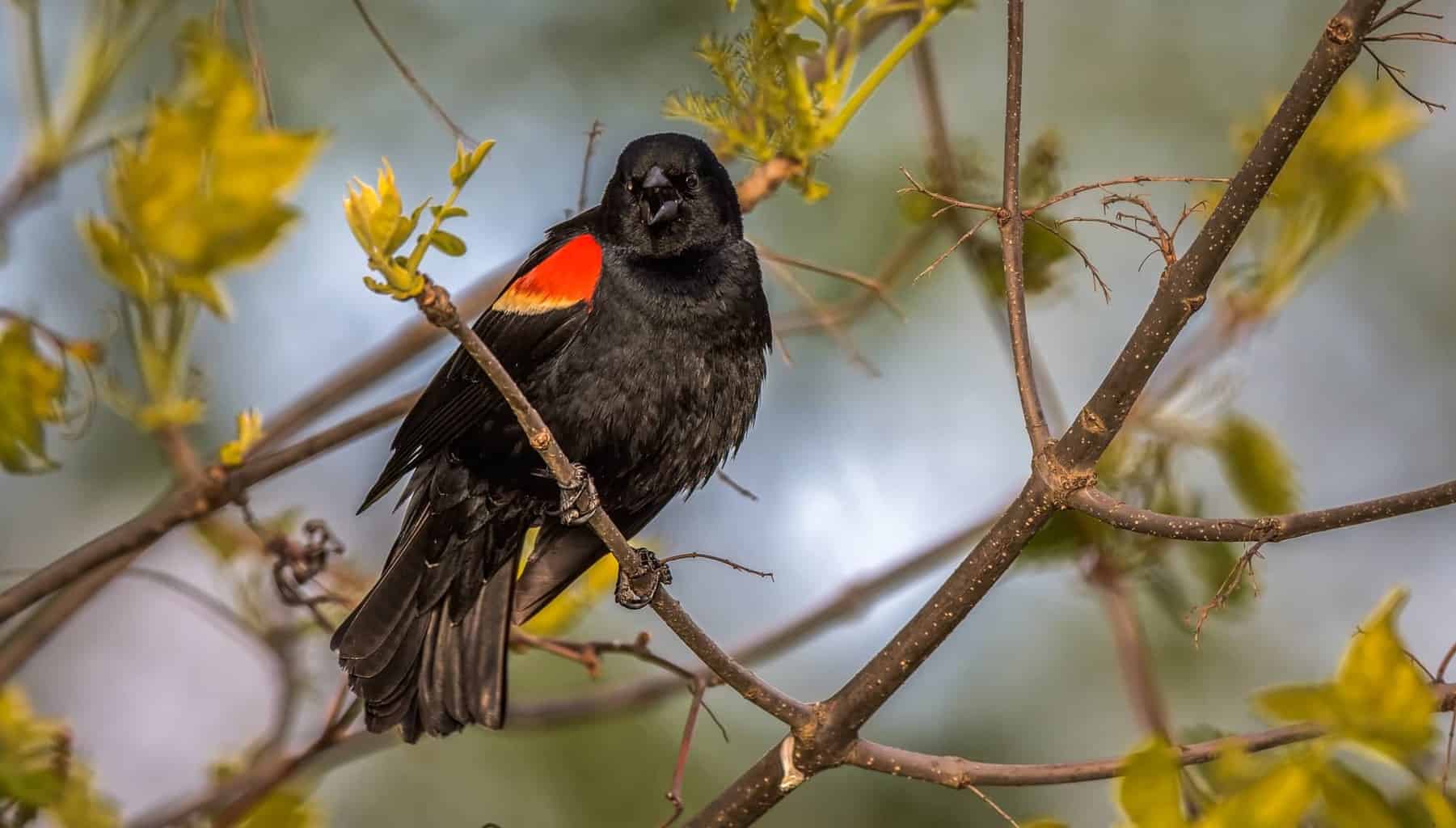
- Scientific Name: Agelaius phoeniceus
- Length: 9–10 inches
- Weight: 2.5–3 ounces
- Wingspan: 12–16 inches
Red-winged Blackbirds live up to their name. They’re black birds with red wings, although the red wings claim may seem a bit misleading. Instead of red wings, they have small red patches on their shoulders.
They’ll remind you of army uniforms, with the rank ornament and all.
You may mistake these birds for American crows at first glance. However, once you notice the red on their shoulders, you’ll identify them instantly.
In the summer, you’ll find these birds near waterways and marshes. During the cold months, they move to meadows and open habitats.
Blue Birds in Tennessee
Blue Jay
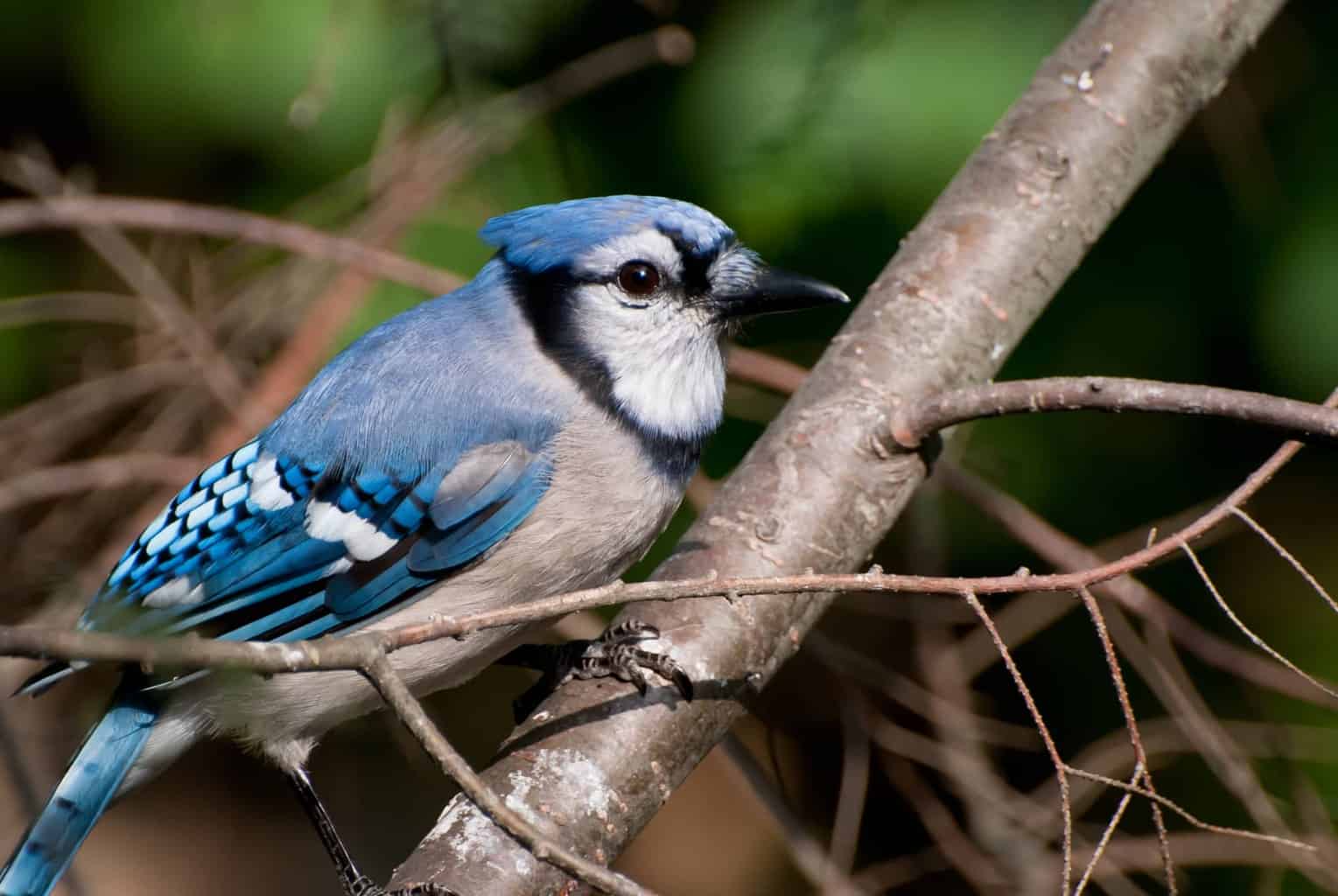
- Scientific Name: Cyanocitta cristata
- Length: 9–12 inches
- Weight: 2.5–3.5 ounces
- Wingspan: 13–17 inches
Like Northern Cardinals, Blue Jays are highly common in the US. They live in all states, and they’re permanent residents in most of them. You can find them anywhere, from city streets to low elevation forests.
These birds have an icy blue pigmentation that looks like the sky on a cold morning. They look similar to pretty much all bluebirds, but you can identify them using the blue crest on their heads. It’s not found on females, though.
Blue Jays are common feeder birds. All you have to do is offer peanuts and black oil sunflower seeds, and they’ll most likely come visiting.
Tufted Titmouse
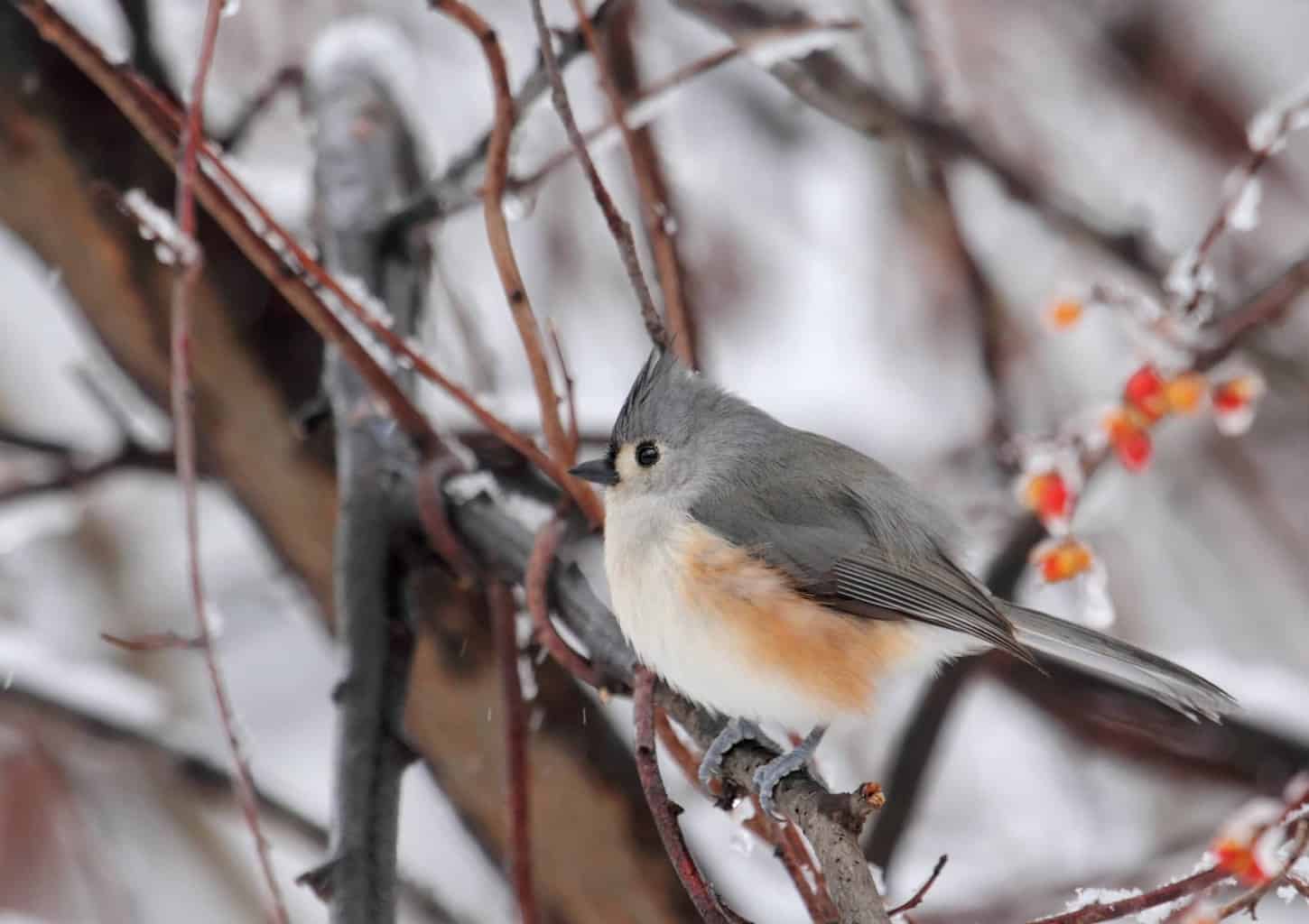
- Scientific Name: Baeolophus bicolor
- Length: 5.5–6.2 inches
- Weight: 0.7–0.9 ounces
- Wingspan: 8–10.3 inches
Tufted Titmice are common backyard visitors. They look a bit like cardinals because they have a similar crest. However, cardinals are larger and more round.
You can distinguish male Titmice from females by the crest males have. Their bodies are a silver-gray shade, and they have blue heads. The blue is a bit pale, so it may go unnoticed. However, you can see it clearly under the sunlight.
These birds are common in Tennessee all year long.
Eastern BlueBird
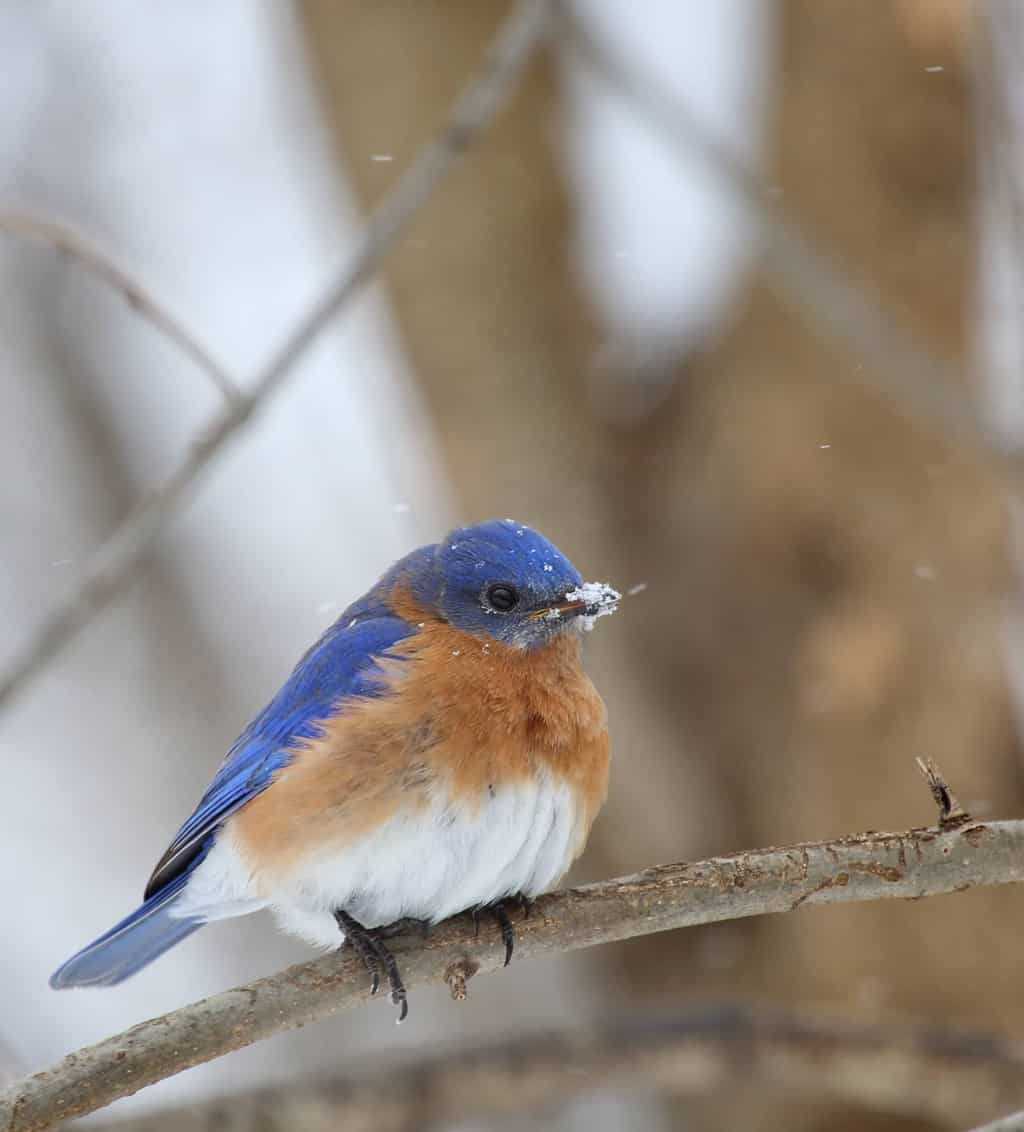
- Scientific Name: Sialia sialis
- Length: 7–8 inches
- Weight: 1–2 ounces
- Wingspan: 11.5–13 inches
Eastern Bluebirds have three colors on their bodies. Their heads and backs are covered in blue feathers, their underbellies are white, and their fronts are a burnt peachy color. They may look a bit like Indigo Buntings, but their unique coloration gives them away.
These birds are permanent residents in Tennessee. Some of them may move south in the cold months, but they mostly stay in the state for the whole year. It’s worth noting that their populations are declining, though.
Blue-Gray Gnatcatcher
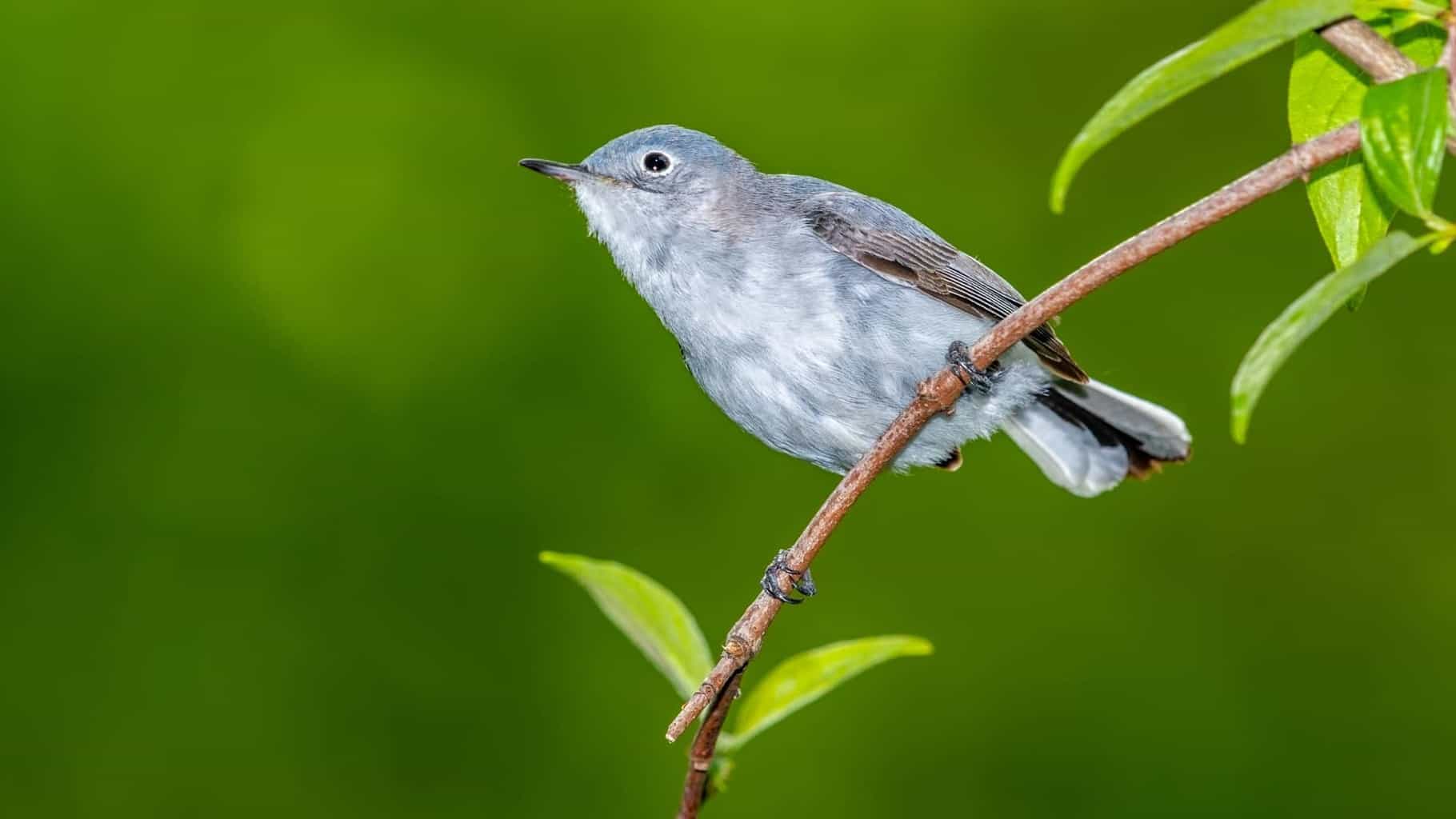
- Scientific Name: Polioptila caerulea
- Length: 4–4.3 inches
- Weight: 0.2–0.3 ounces
- Wingspan: 6.3 inches
Blue-gray Gnatcatchers carry the two colors in their name because they look blue and gray. The males are a soft shade of blue that becomes prominent under direct sunlight. Meanwhile, the females have gray feathers with only pale blue hints that may go unnoticed.
These birds primarily feed on insects; gnats aren’t a regular part of their diet despite their name. They may also feed on seeds, so you can offer those on your backyard feeder.
If you want to catch Blue-gray Gnatcatchers in their natural habitat, you can walk through a deciduous forest, where they spend most of their time.
Indigo Bunting
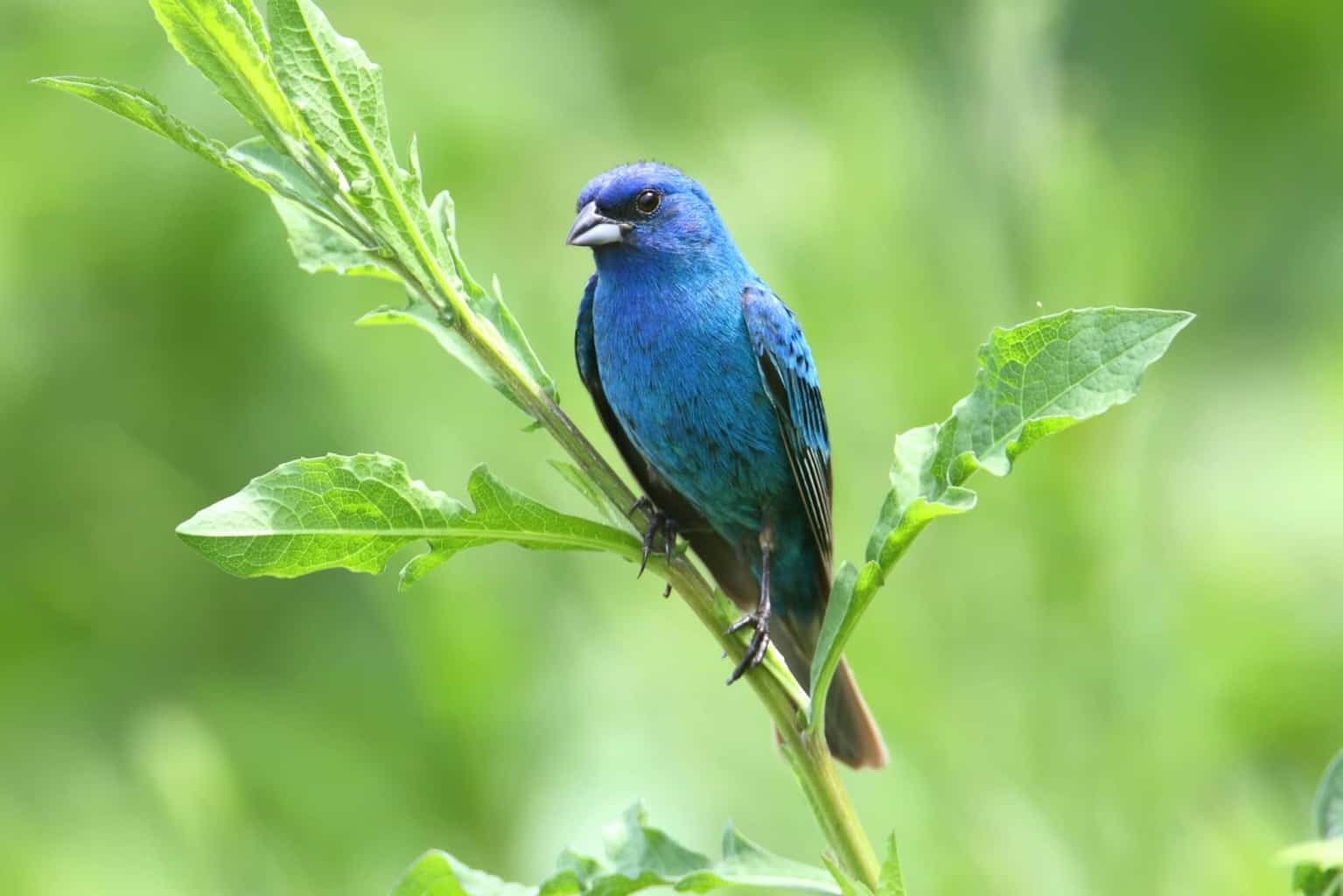
- Scientific Name: Passerina cyanea
- Length: 4.5–5.9 inches
- Weight: about 0.5 ounces
- Wingspan: 7–9 inches
Indigo Buntings are a bright blue color that leans shyly towards turquoise. Their bodies get lighter towards their tails and darker on their heads. They almost look like their bodies are colored in a gradient of blue shades.
These birds are about the same size as hummingbirds or slightly larger. So, they won’t be easy to catch because of their small size. If you want to get lucky, you can check telephone lines; that’s where they spend most of their time.
Indigo Buntings are in the same family as cardinals. They love to visit backyard feeders, especially in the winter. You can provide some seeds and wait for them to visit.
Green Birds in Tennessee
Green Heron
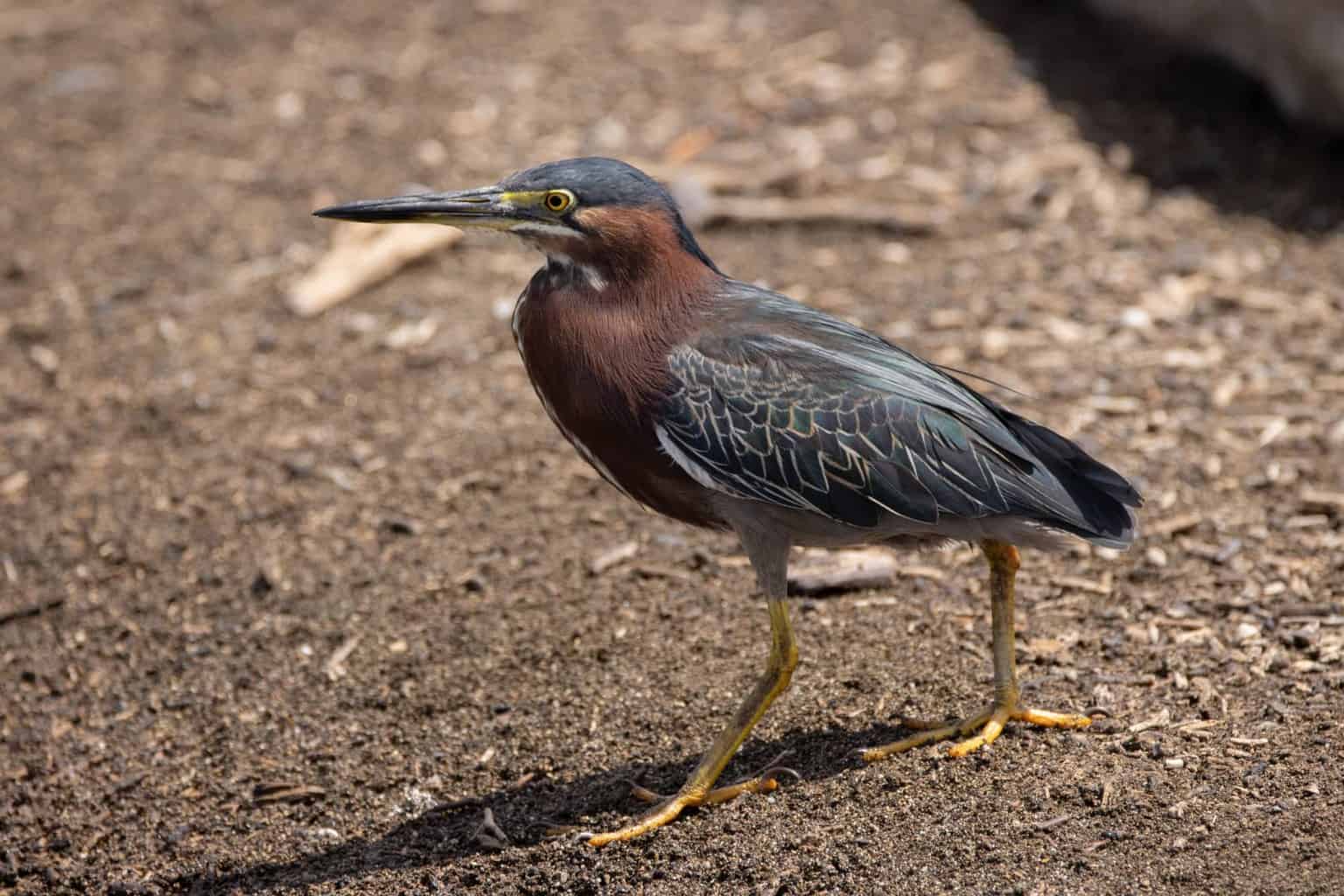
- Scientific Name: Butorides virescens
- Length: 16–18 inches
- Weight: 8–8.5 ounces
- Wingspan: 25–26.8 inches
- Additional Information:
You may not identify a green heron at first glance. These birds have iridescent feathers that change colors under direct sunlight so you may mistake them for another bird. However, the green wings should give them away instantly.
Other than that, they have tall necks in a rusty orange color. They keep them tucked in most of the time, though.
Mallard Duck
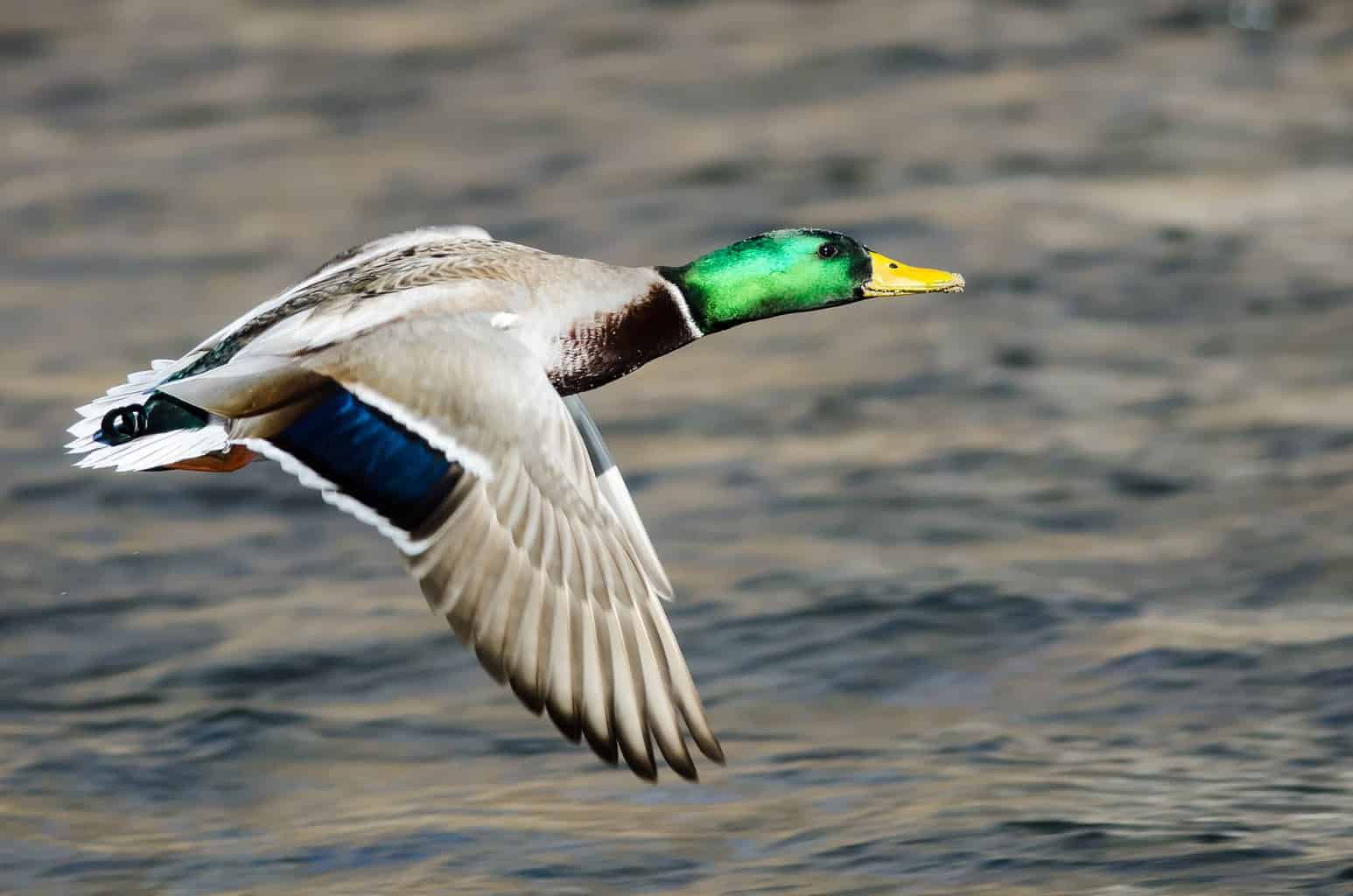
- Scientific Name: Anas platyrhynchos
- Length: 19.7–25.5 inches
- Weight: 35.4–46 ounces
- Wingspan: 32–37 inches
There are nearly 45 different species of ducks and geese in Tennessee, so it looks like waterfowl love the Volunteer State! Still, the Mallard Duck is the most common species and the best-known.
You may be familiar with Mallard Ducks because they’re used to exemplify ducks in almost all American cartoon shows.
If you want to see them in real life, you can look in rivers and wet areas. They spend most of their time in swamps, feeding on various kinds of insects and water vegetation.
Ruby-Throated Hummingbird

- Scientific Name: Archilochus colubris
- Length: 3–4 in
- Weight: 0.1–0.5 oz
- Wingspan: 4–4.5 in
The adult Ruby-throated Hummingbird is a small-sized bird, but they’re pretty easy to identify because of their bright red necks. Their neckline is covered with red iridescent feathers that shine brightly under sunlight.
Their wings, backs, and heads are green and covered by iridescent feathers, too. Additionally, their fronts are white.
These birds are year-round residents in Tennessee, though some of them prefer to go to Mexico for the winter. However, their numbers remain on the rise all year long.
Orange Birds in Tennessee
American Robin
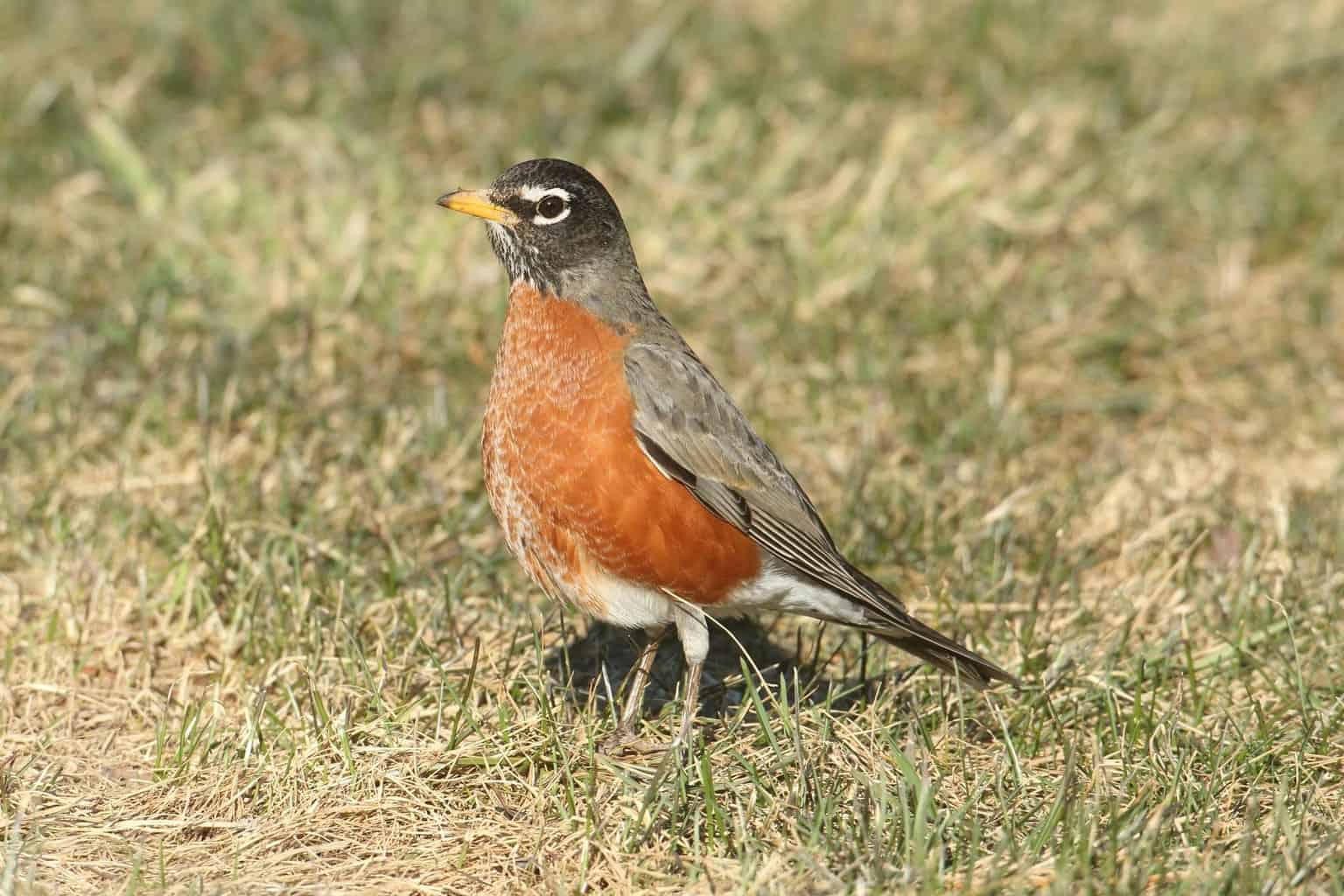
- Scientific Name: Turdus migratorius
- Length: 9.1–11.0 inches
- Weight: 2.5–3 ounces
- Wingspan: 12–16 inches
The population of American Robins in Tennessee is constantly on the rise. The birds stay in the state all year long, breeding and saving food for winter. So, the numbers rise each year; good news for bird watchers.
These birds have orange fronts and light gray wings. They’re easily identifiable by their loud, cheerful call.
Luckily for you, you won’t have to look for American Robins a lot. They’re urban birds, so they spend most of their time around populated areas and city streets.
Rufous Hummingbird

- Scientific Name: Selasphorus Rufus
- Length: 2.8–3.5 inches
- Weight: 0.071–0.176 ounces
- Wingspan: 4.3–4.5 inches
Rufous Hummingbirds are so small that you can miss them if they’re in flight. They’re among the smallest bird species in the world, but their bright orange color makes them easier to see when spotted.
They have long, pointed bills that look out of proportion with their bodies. You can look near flowery areas if you want to see them because hummingbirds like to feed on flowers’ nectar and sugar water at hummingbird feeders.
Although these birds are exceptionally small, they migrate for up to 2000 miles when they leave for other states.
Baltimore Oriole
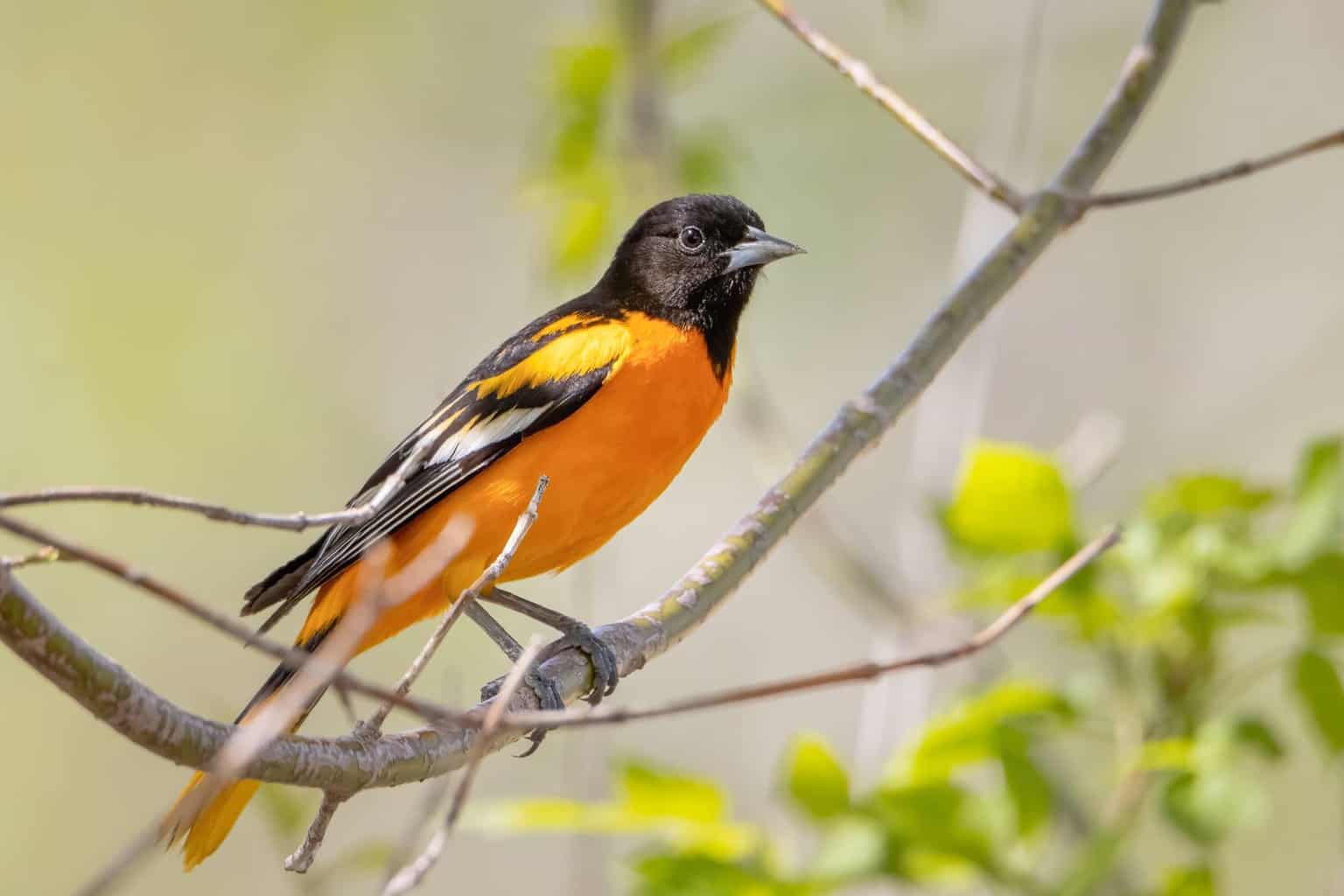
- Scientific Name: Icterus galbula
- Length: 6.6–7.5 inches
- Weight: 1–1.4 ounces
- Wingspan: 9–11.8 inches
Baltimore Orioles are among the most common orange birds in the United States. They have black heads and wings, and the rest of their bodies are bright orange. The females have a paler coloration overall and lack the black hood.
If you want to spot Baltimore Orioles, you’ll need to keep your neck strained. These birds seldom get down from high branches. You can look for them on tall trees and in the upper foliage.
Eastern Towhee

- Scientific Name: Pipilo erythrophthalmus
- Length: 7–9.1 inches
- Weight: 1.1–2 ounces
- Wingspan: 8–11.8 inches
Eastern Towhees are pretty easy to identify. They have round bodies that look like small fur balls. And their coloration is unique.
They have black feathers on their wings, backs, and heads, and descending down their neckline a bit. Meanwhile, their chests are white, and their sides are a rusty orange. They sort of look like sparrows, but they’re a bit larger.
You can see these birds mostly around woodland hedges and residential gardens.
Carolina Wren
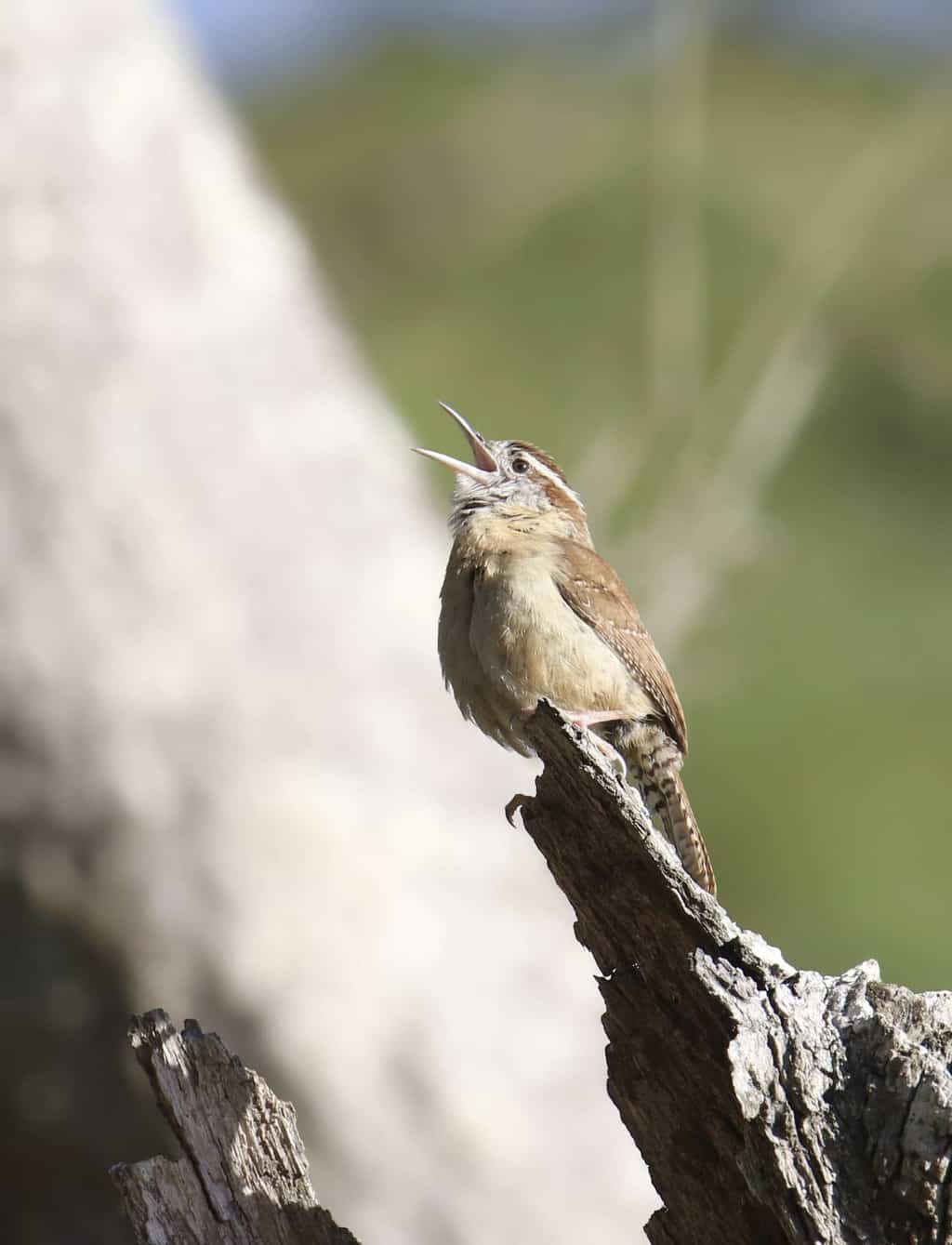
- Scientific Name: Thryothorus ludovicianus
- Length: 5–5.5 inches
- Weight: 0.6–0.8 ounces
- Wingspan: 10–11 inches
Carolina Wrens have brown wings with beige specks all over, their fronts are a pale orange shade, and they have a white stripe that runs along their head above the eye. The females are paler, but the birds’ overall coloration is close to orange.
These birds visit backyard feeders a lot because they’re small so that they can fit in feeders of all kinds. You can offer some seeds and suets if you want to attract them. The males’ call will have you running out of the house because it’s too loud for their small size.
Other than that, you can find them near shrubby thickets and brushy yards.
Yellow Birds in Tennessee
Yellow-Breasted Chat
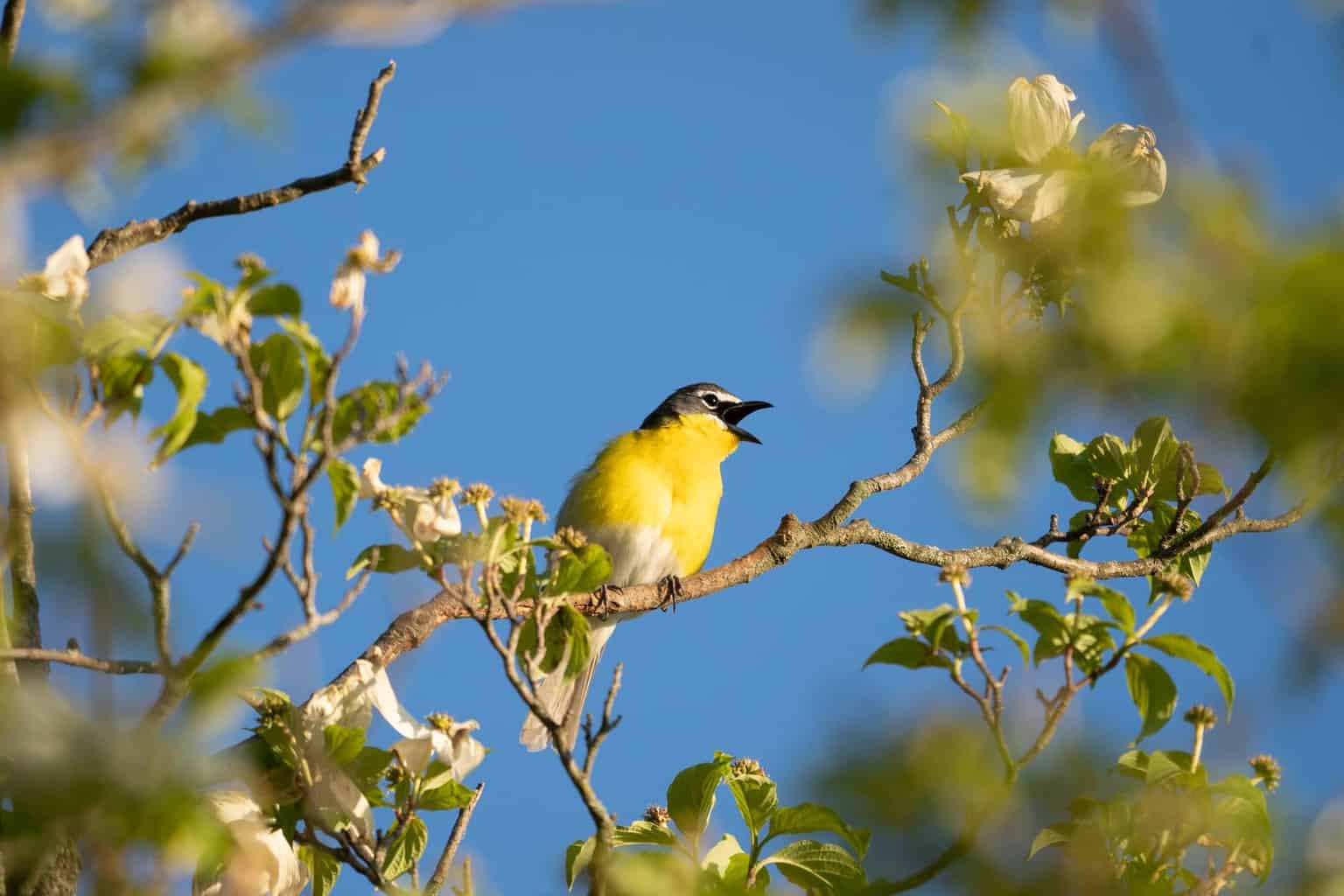
- Scientific Name: Icteria virens
- Length: 7–7.2 inches
- Weight: 0.9–1.1 ounces
- Wingspan: 9.8–10 inches
Yellow-breasted Chats are members of the New World Warblers family, although they’re a bit larger than the birds in the same family.
These birds have gray head caps and wings, but their chests and bellies are yellow.
In Tennessee, these birds are common visitors in the summer. They arrive in the state in mid-April and start leaving late in September after the summer ends. Your chance of seeing them is pretty high during this time.
American Goldfinch

- Scientific Name: Spinus tristis
- Length: 4.3–5.5 inches
- Weight: 0.39–0.71 ounces
- Wingspan: 7.5–8.7 inches
American Goldfinches are among the most popular yellow bird species because of their unique appearance. They have bright yellow bodies with black wings and foreheads.
Most yellow birds have the same coloration, and you may mistake them for other species at first. The black patch on their foreheads gives them away, though.
These birds are common backyard birds. You can attract them to your feeder by offering dried insects and seeds.
Hooded Warbler
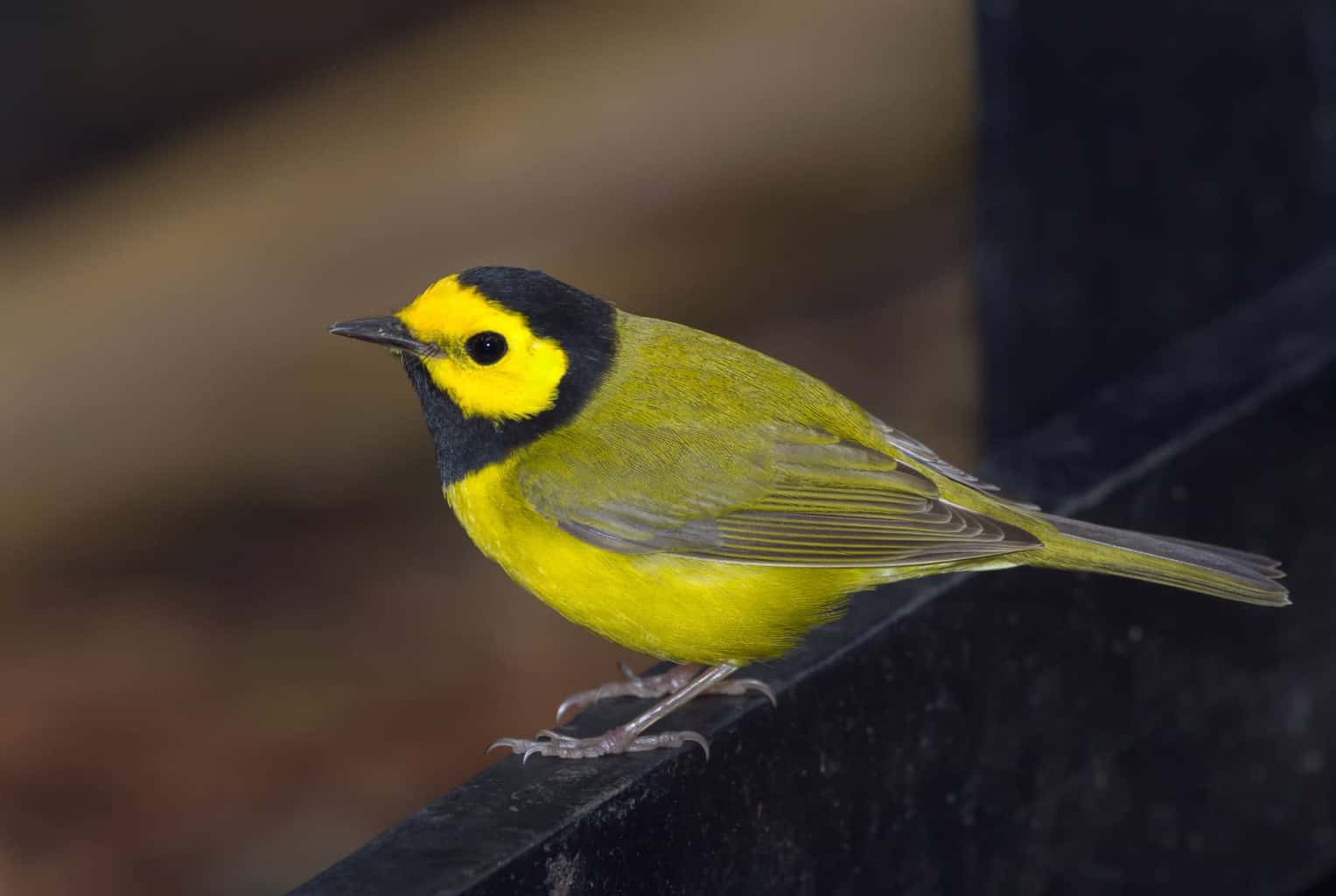
- Scientific Name: Setophaga citrina
- Length: 5–5.2 inches
- Weight: 0.2–0.5 ounces
- Wingspan: 6.9–7.1 inches
Hooded Warblers have an odd coloration, which is why most bird watchers work hard to detect them. They have bright yellow bodies with a black patch around their heads that looks like a hood, hence the name.
You’d be lucky to see a Hooded Warbler; it’ll look good in pictures. If you want to get lucky, look for these birds near thick vegetation. They spend most of their time in green areas trying to find seeds and insects for feeding.
You may also see them in deciduous trees.
Yellow Warbler
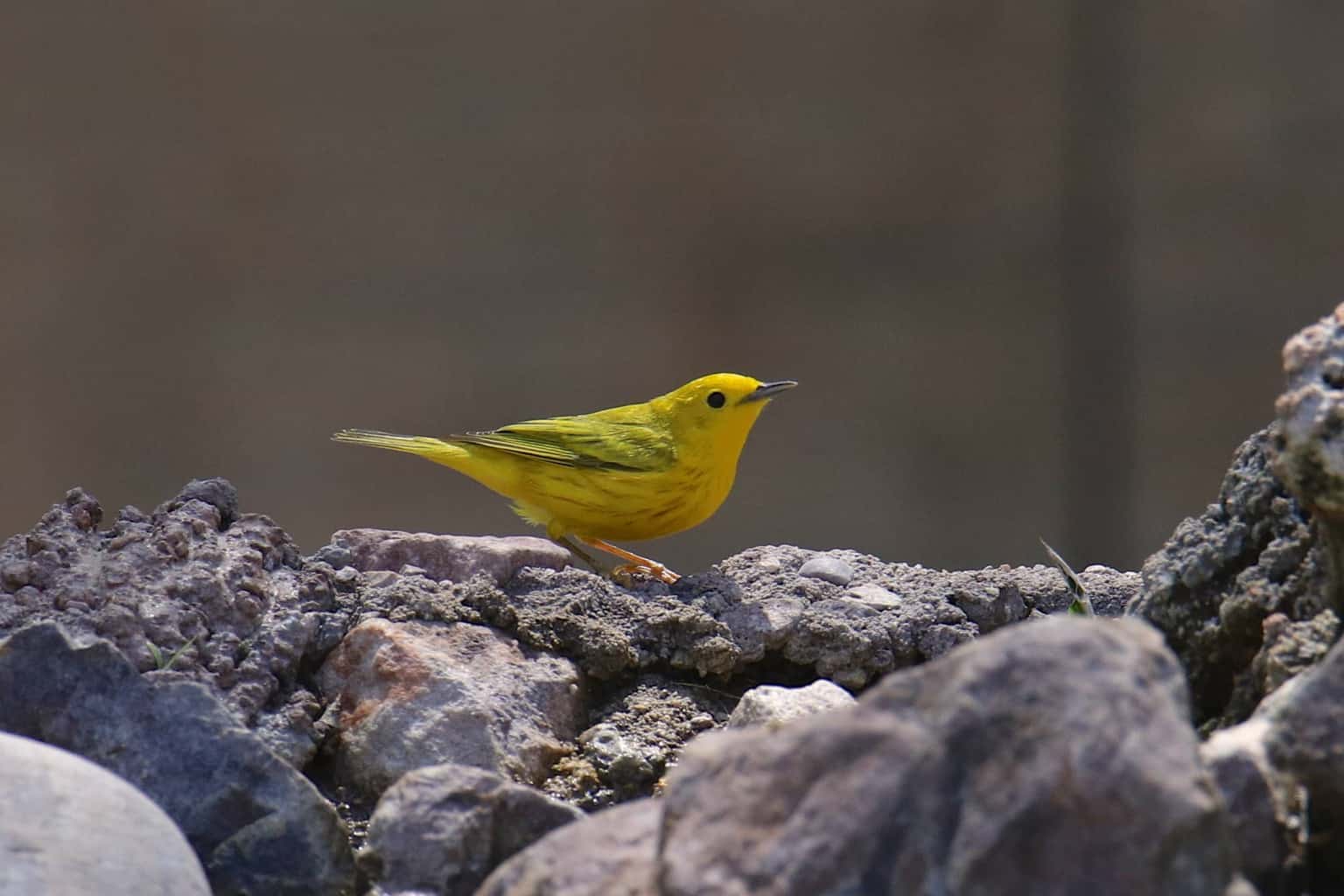
- Scientific Name: Setophaga petechia
- Length: 4.7–5.2 inches
- Weight: 0.3–0.5 ounces
- Wingspan: 6.3–7.9 inches
Yellow Warblers are members of the Warbler family, along with Hooded Warblers. Like all the birds belonging to the family, they’re small songbirds native to North America.
These birds are entirely yellow, but their wings have some streaks of white and gray. The males also have some pale brown streaking on their yellow fronts.
You can see Yellow Warblers commonly foraging on the ground. They feed on worms and insects, so they hunt for them in the soil most of the time.
Other Birds in Tennessee
Mourning Dove
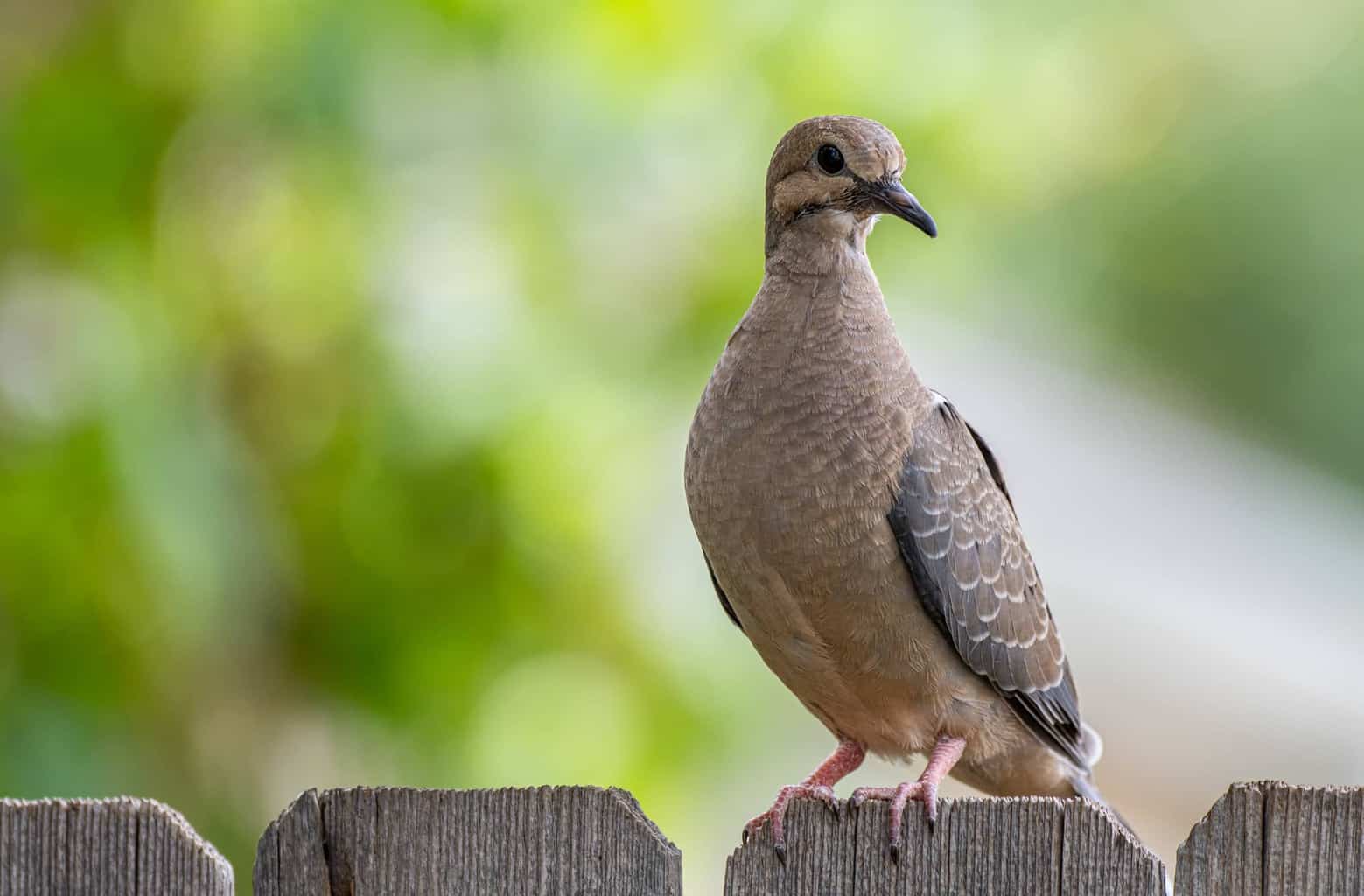
- Scientific Name: Zenaida macroura
- Length: 11–12 inches
- Weight: 4–6 ounces
- Wingspan: 17–17.7 inches
Mourning Doves are pretty abundant In Tennessee. They’re the most common game species in the state, and their numbers have been stable for quite some time now.
These birds frequently visit backyard bird feeders. If you have a platform feeder, you can offer some seeds, suet, and fruits, and Mourning Doves will hopefully make an appearance. They don’t enter small feeders because they prefer open spaces.
If you want to see Mourning Doves, look for them on telephone lines and high branches in residential areas.
House Sparrow

- Scientific Name: Passer domesticus
- Length: 6–6.7 inches
- Weight: 0.9–1.1 ounces
- Wingspan: 7.6–9.8 inches
House Sparrows are small and round. They have gray bellies and brown head caps. Meanwhile, their wings are covered in brown feathers, but they have black specks all over. They look like many other birds, but you can identify them by the black circle around their eyes.
These birds are abundant in Tennessee, and they stay for the whole year. Their numbers have declined in suburban and urban areas, but they’re still common in agricultural lands.
It’s worth noting that the Migratory Bird Treaty Act doesn’t protect House Sparrows, so they’re frequently targeted by pellet gun owners, which is why their numbers are on the decline.
European Starling
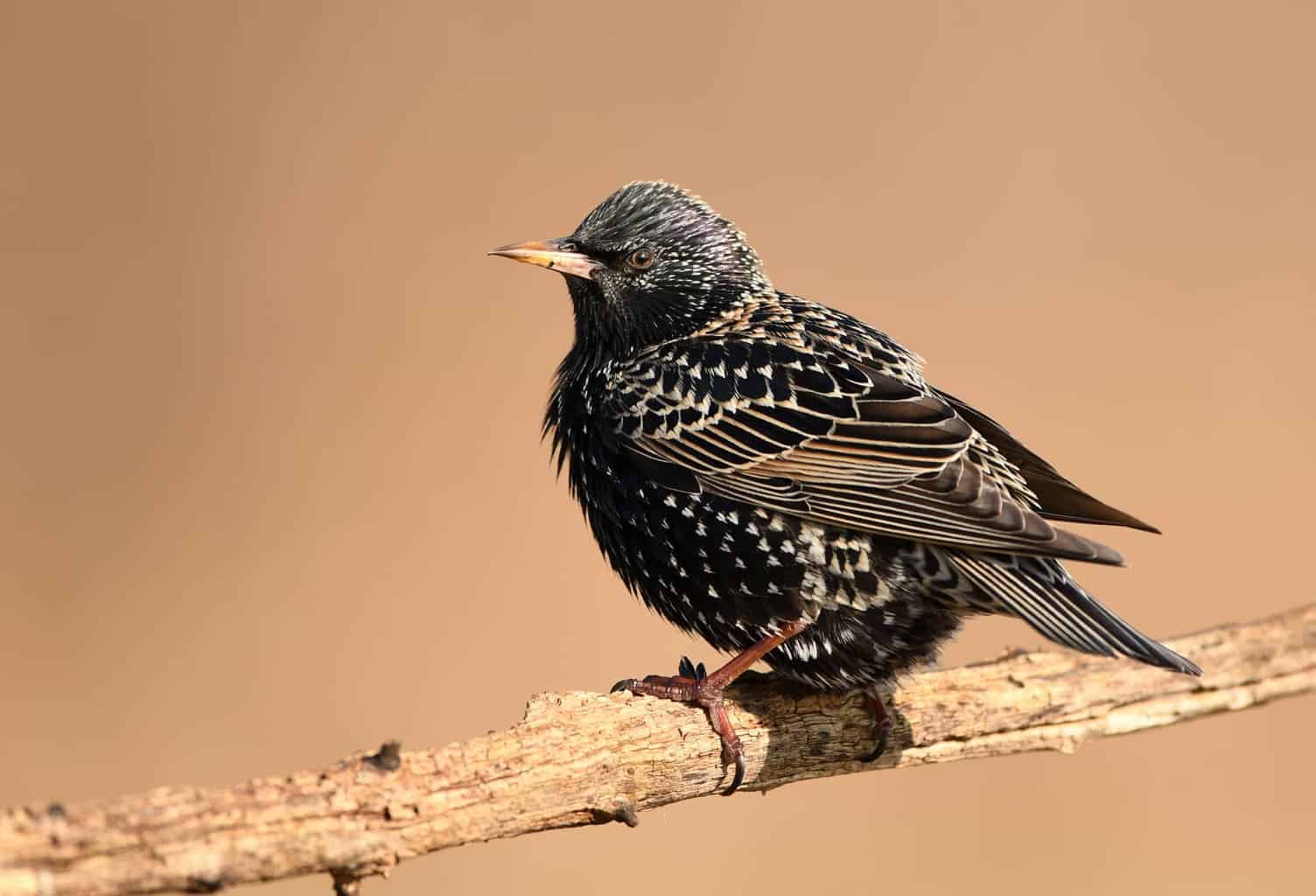
- Scientific Name: Sturnus vulgaris
- Length: 8–9 inches
- Weight: 2–3.5 ounces
- Wingspan: 12–16 inches
If you want to take pictures of beautiful birds, look for European Starlings. Their whole bodies are covered by iridescent feathers that glow under direct sunlight. According to the light directed on them, they may appear blue or purple.
You can find this invasive species in city streets, parks, and fields where these aggressive birds drive out native birds in competition for food. They mainly forage on the ground, jumping in a zig-zag motion to catch insects in the soil.
Common Grackle
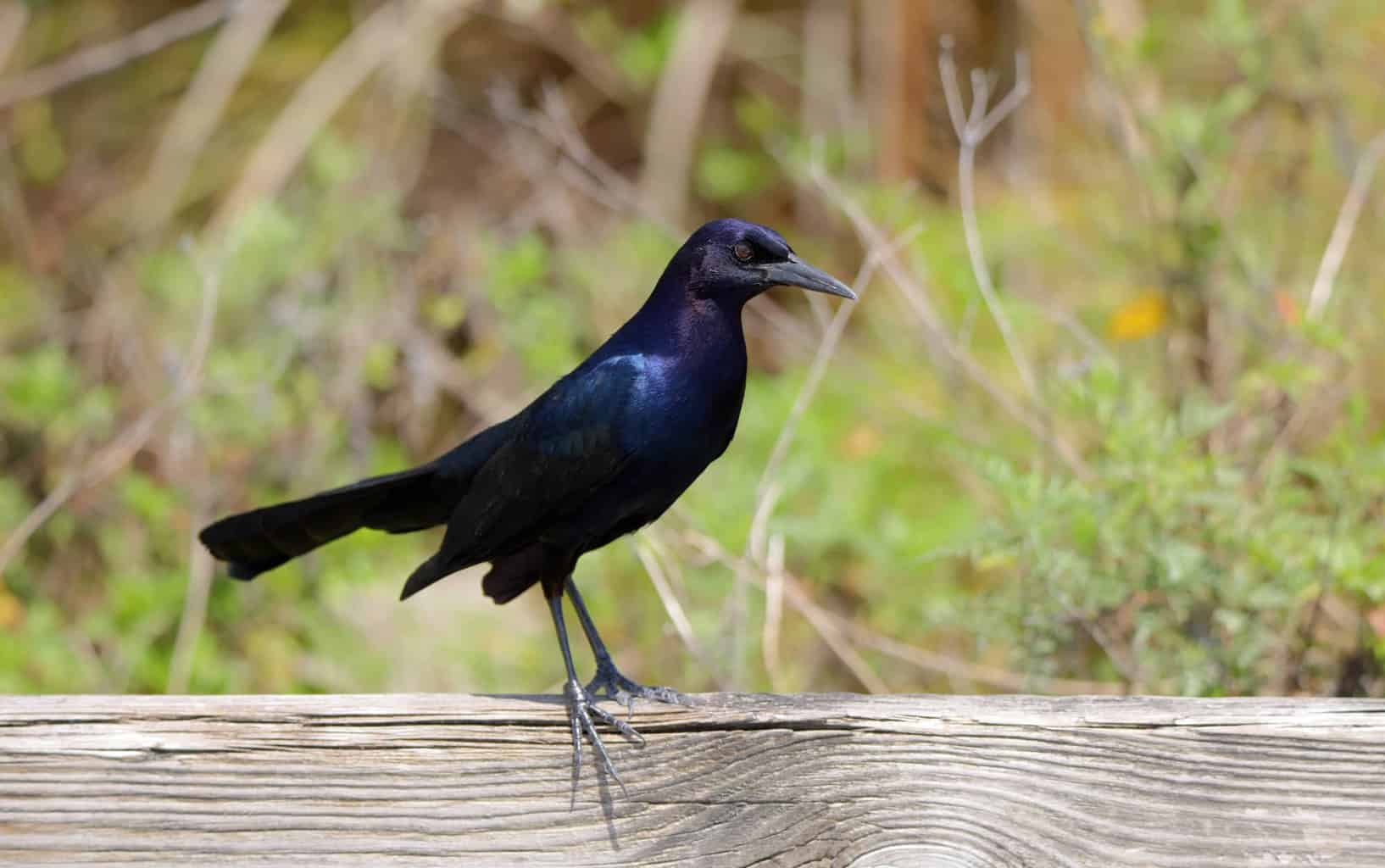
- Scientific Name: Quiscalus quiscula
- Length: 11–13 inches
- Weight: 2.6–5 ounces
- Wingspan: 14–18 inches
Common Grackles may be classified as blue or blackbirds. They generally belong to the blackbird family, but they have a blue head, and it’s their most distinctive feature. You probably won’t see the blue color in the dark, so you can consider the bird black.
These birds are pretty common in most states, and their numbers are on the rise in Tennessee. They’re actually among the most popular nesting birds in the Volunteer State. In the winter, they gather in large flocks of hundreds or thousands.
You can find Common Grackles in farmlands, woodland edges, and suburban areas. They may also be present in some wetlands.
If you have a backyard feeder, you may see them. Provide some sunflower seeds and peanuts, and you may get an entire flock on your lawn.
To Wrap Up
There are many types of birds in Tennessee. Whether you’re living in the state or visiting for a couple of weeks, you can take some beautiful pictures of different bird species. The color classification will also help you identify the birds quickly and easily.
Generally, most of these birds will visit your backyard if you provide the right food. Offer some suet and seeds, and wait for the magic to happen!

